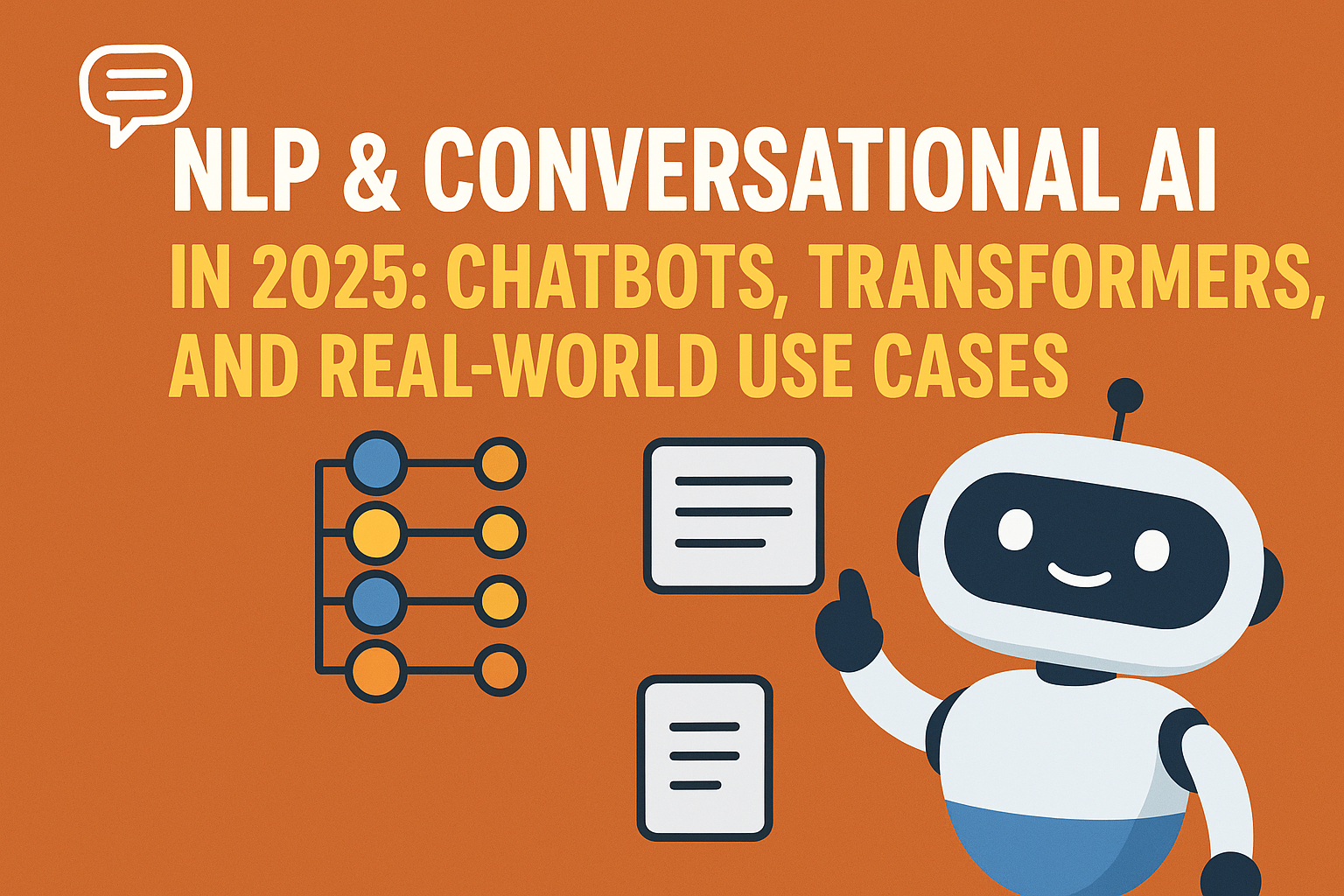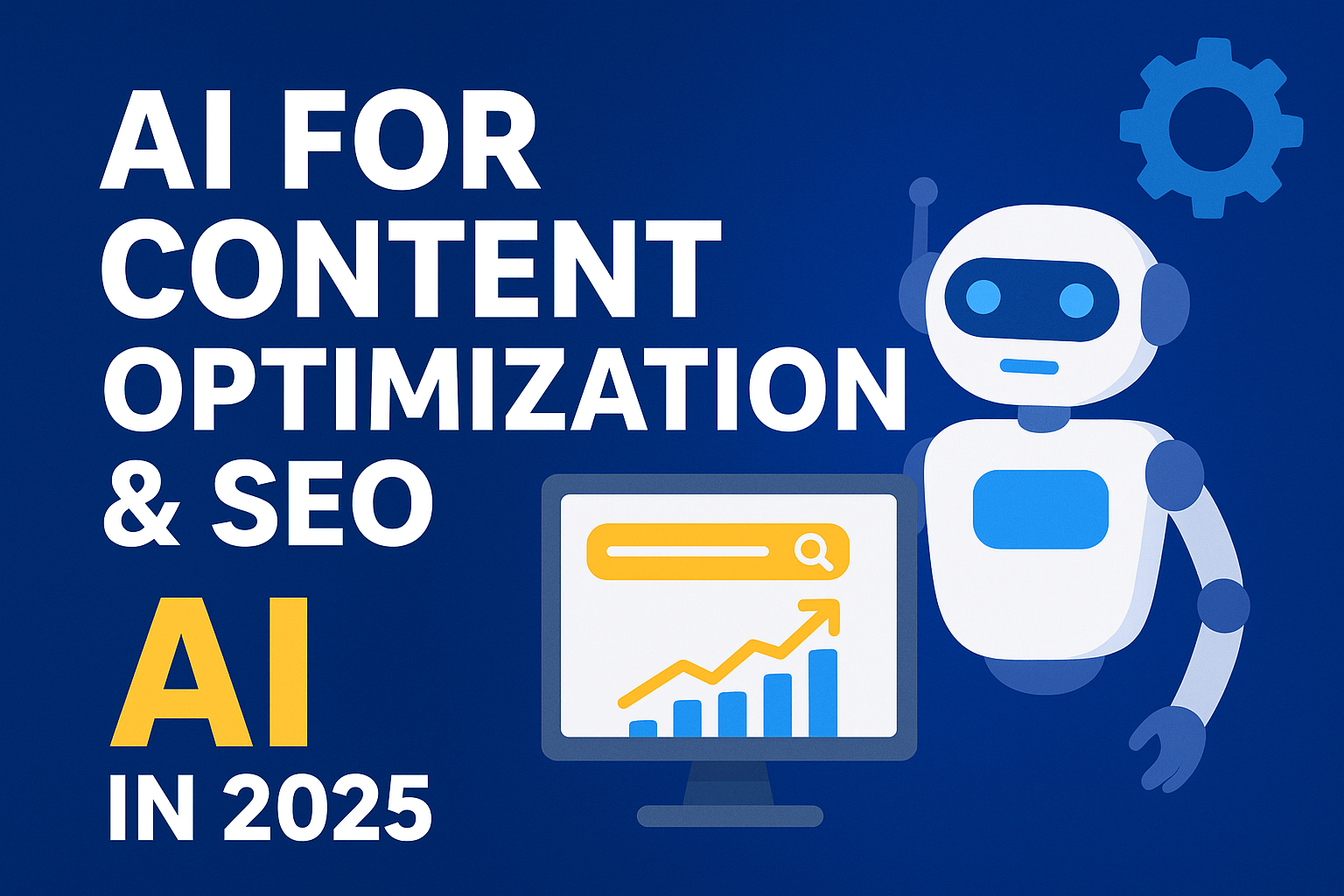The world of technology is on the verge of a big change. This change comes from natural language processing and conversational AI. The market for NLP is expected to reach $53.42 billion by 2025. It will grow at a fast rate of 24.76% every year.

This growth is because more people are using AI chatbots for customer service. Also, new transformer-based models are being developed. As we enter 2025, knowing about these technologies will be key for both businesses and individuals.
Key Takeaways
- The NLP market is expected to reach $201.49 billion by 2031.
- Conversational AI is transforming customer service with AI chatbots.
- Transformer-based models are making NLP better.
- Real-world use cases of NLP and Conversational AI are growing fast.
- Businesses must adapt to these technologies to stay ahead.
The Evolution of Natural Language Processing (NLP) and Conversational AI
NLP and Conversational AI have seen huge growth, from simple systems to complex neural networks. This change has made how machines talk and understand us much better. Now, our chats with machines feel more natural and easy.
From Rule-Based Systems to Neural Networks
At first, NLP systems used rules, but they couldn’t learn from data. Moving to neural networks was a big step. It let machines learn language patterns and improve how they talk and understand us.
The Transformer Revolution
The Transformer models changed NLP by making it better at handling language. This new way of processing data has helped create advanced language models. These models can now do complex tasks with great accuracy.
Current State of NLP Technology in 2025
In 2025, NLP technology keeps getting better, with Conversational AI getting smarter. NLP is now working with other AI to make our interactions with machines even more natural and fun.
Understanding the Core Technologies Behind Modern Conversational Systems
Modern conversational systems use advanced technologies for human-computer interaction. They can now understand and reply to user inputs like humans do.
Natural Language Understanding (NLU) Components
NLU is key in conversational systems, helping them understand user inputs. It breaks down inputs into smaller parts, tags them, and finds named entities. This way, it gets the context and intent of what’s said.
Advanced NLU systems use machine learning to get better at understanding human language. They can handle the subtleties of how we speak.

Natural Language Generation (NLG) Advancements
NLG lets conversational systems create responses that sound like they were written by humans. New NLG tech uses transformer models and large language models. These models learn from huge datasets, making them better at creating text that fits the conversation.
Context Management and Memory Systems
Good conversational systems need strong context management and memory. This lets the AI remember past talks and understand the current one. It can then respond in a way that makes sense.
Techniques like contextual embedding and memory-augmented neural networks help improve this. They make the AI better at keeping track of the conversation.
Transformer Models: The Backbone of Modern NLP
The transformer architecture has greatly changed NLP. It offers a strong way to understand and create human-like language.
How Transformer Architecture Works
Transformer models use self-attention to see how words relate to each other. This makes them great for text, helping them understand long sentences and their context.
Key components include the encoder, decoder, and self-attention layers. The encoder turns input sequences into a single representation. The decoder then uses this to create output sequences.
Key Transformer Models in 2025
Several transformer models stand out in NLP:
- BERT (Bidirectional Encoder Representations from Transformers): It’s good at understanding word context.
- GPT (Generative Pre-trained Transformer): It’s known for creating text that makes sense and is relevant.
- LLaMA (Large Language Model Application): It balances understanding and creating text well.
| Model | Primary Use | Notable Features |
|---|---|---|
| BERT | Text classification, sentiment analysis | Bidirectional training, contextual understanding |
| GPT | Text generation, conversational AI | Generative capabilities, contextual relevance |
| LLaMA | Balanced NLP tasks | Versatility, efficient training |
Fine-Tuning Transformers for Specific Applications
Fine-tuning adjusts pre-trained models for specific NLP tasks. This makes them more accurate and relevant for their new tasks.
By fine-tuning models like BERT or GPT on specific datasets, developers can do better in tasks like sentiment analysis or text generation.
Natural Language Processing (NLP) Conversational AI AI Chatbots for Customer Service
AI chatbots are changing customer service. They help businesses save money and improve customer experience. With NLP and conversational AI, companies can offer 24/7 support and personalized experiences.
Benefits of AI-Powered Customer Service
AI chatbots have many advantages. They reduce response times and boost customer satisfaction. They also cut down on costs.
By handling simple questions, chatbots free up human staff for harder tasks. This makes businesses more efficient. Chatbots are set to save companies over $8 billion by 2026.

Implementation Challenges and Solutions
Starting AI-powered customer service can be tough. It involves integrating chatbots with current systems and ensuring data privacy. It also means dealing with the complexity of human language.
To tackle these issues, businesses can use modular implementation approaches. They can start small and grow. Using advanced NLP techniques like entity recognition and sentiment analysis can also help.
Measuring ROI and Performance Metrics
To see if AI customer service works, businesses need to watch certain metrics. These include first contact resolution rate, customer satisfaction (CSAT), and cost savings.
By looking at these, companies can make their chatbots better. This leads to better ROI and happier customers. For example, a good chatbot can cut down on customer service calls, saving a lot of money.
Voice Assistants and Multimodal Conversational AI
Voice assistants and multimodal conversational AI are changing how we interact in many fields. They make using technology easier and more fun. Now, we can talk to devices and see what they show us.
Voice-First Interaction Design
Voice-first design means making things work with just your voice. It’s great for situations where you can’t use your hands. For example, Amazon’s Alexa handles billions of voice commands every day. It gets better at understanding different ways people speak.
To design for voice-first, you need to know a lot about how we talk and behave. You have to make sure the conversations are easy to follow and helpful.
Integrating Visual and Voice Interfaces
Multimodal AI combines voice and visuals for a better experience. It lets us do more things at once, like seeing info on a screen while talking. This makes interactions more detailed and fun.
“The future of human-computer interaction lies in multimodal interfaces that seamlessly blend voice, vision, and touch.”
Sundar Pichai, CEO of Google
| Interface Type | Description | Example |
|---|---|---|
| Voice-First | Interaction mainly through voice commands | Amazon Alexa |
| Multimodal | Combination of voice and visual interfaces | Google Assistant on Android Devices |
Privacy and Security Considerations
As voice assistants and multimodal AI grow, so do worries about privacy and security. Keeping user data safe and making sure interactions are secure is very important.
Key considerations include using strong encryption, being clear about how data is used, and giving users control over their data.
Advanced Text Analysis and Semantic Clustering Techniques
In NLP, advanced text analysis and semantic clustering are key. They help extract insights from lots of data. These methods let companies understand customer feedback and other unstructured data better.

Sentiment Analysis and Opinion Mining
Sentiment analysis and opinion mining are vital for grasping emotions in customer feedback. They help businesses understand public opinions and make smart choices. Sentiment analysis finds if text is positive, negative, or neutral.
Opinion mining goes deeper, pulling out specific opinions from text. This is super helpful in customer service, where knowing what customers feel can boost their experience.
Entity Recognition and Relationship Extraction
Entity recognition spots and sorts named entities in text, like names and places. It’s key for finding important info in big datasets.
Relationship extraction finds connections between these entities. For example, in healthcare, it can link patients, doctors, and treatments. This shows how they’re related.
Semantic Clustering for Content Organization
Semantic clustering groups similar content based on meaning. It’s great for organizing content, making it easier to find what you need.
Using semantic clustering, companies can improve their search systems. This makes it simpler for users to find what they’re looking for. It’s really useful in fields with lots of documents, like healthcare and law.
Building Conversational AI Systems: A Step-by-Step Guide
To make a good conversational AI, you need a clear plan. This includes setting goals, designing conversations, and testing the AI. This guide will show you how to build a top-notch conversational AI system.
Defining Conversational Goals and User Personas
Starting with clear goals is key to a great conversational AI. You must know what the AI will do and who it will help. Making user personas helps tailor the AI to different people. For example, an e-commerce chatbot might have personas for new buyers, regular customers, and those needing help.
To set your goals and create personas well, follow these steps:
- Know what your AI will do and what tasks it will perform.
- Study what your users like and how they behave.
- Make personas for your main user groups.
Designing Conversation Flows and Dialogue Management
Creating conversation flows means making a clear path for user interactions. Good dialogue management lets the AI understand and answer user questions well. You need to know about natural language processing (NLP) and guess what users might say.
To make strong conversation flows, remember:
- Plan out how conversations can go based on what users say.
- Use dialogue management systems to handle complex user talks.
- Make sure your AI can handle mistakes or unexpected things users say.
Testing and Iterating Your Conversational AI
Testing is very important for making a good conversational AI. It checks how the AI works in real life, finds what needs fixing, and makes changes. Keeping the AI updated with user feedback and data is key to making it better and more satisfying for users.
Here are some ways to test and improve your conversational AI:
- Do user tests to get feedback on how the AI works.
- Look at conversation logs to find common problems or areas to get better.
- Keep making the AI’s conversations and answers better based on what you learn from testing and user feedback.
By following these steps and always making your AI better, you can make a system that really helps users and gives a great chat experience.
Practical Implementation: Developing a Chatbot with Transformer Models
Creating a chatbot that understands and answers user questions is easier than ever. This is thanks to the advancements in transformer models. The Transformer architecture is key to the power of Large Language Models (LLMs). Retrieval-Augmented Generation (RAG) also boosts factual accuracy by linking responses to specific data.
Setting Up Your Development Environment
To begin making a chatbot with transformer models, you need to set up your environment. First, install libraries like Hugging Face’s Transformers and TensorFlow. You can do this by typing pip install transformers tensorflow in your terminal. Make sure you have Python installed, preferably the latest version.
Then, pick a good IDE or text editor for coding. Options include PyCharm, Visual Studio Code, and Jupyter Notebooks. Each has its own benefits, so pick one that suits you best.
Training and Fine-Tuning Your Model
With your environment ready, you can start training and fine-tuning your model. Begin by picking a pre-trained model that fits your chatbot’s needs. BERT, GPT, and LLaMA are good choices. You can then fine-tune these models on your dataset to make them better.
Fine-tuning means adjusting the model’s settings to fit your application. This is done by training the model on your data for a few rounds. It’s important to watch the model’s performance on a validation set to avoid it getting too specialized.

Deployment and Integration Strategies
After training and fine-tuning, it’s time to deploy your chatbot. You can put it on websites, mobile apps, or messaging platforms. For web deployment, use frameworks like Flask or Django to make a REST API that talks to your chatbot model.
To integrate with messaging platforms, you’ll need to use their APIs. For example, to work with Facebook Messenger, create a Facebook Developer account and set up a bot using the Messenger Platform API.
For smooth deployment, consider using Docker for containerization. It keeps your environment consistent. Also, think about using monitoring tools to keep an eye on your chatbot’s performance and how users interact with it.
By following these steps, you can build a sophisticated chatbot that uses transformer models. This will give users a more engaging and effective experience.
Top Conversational AI Platforms and Frameworks in 2025
In 2025, the world of conversational AI is filled with powerful tools. These tools help businesses create smart chatbots and virtual assistants. The chatbot market is growing fast, expected to hit $61.97 billion by 2035.
Enterprise Solutions: Dialogflow, Rasa, and Microsoft Bot Framework
Dialogflow, Rasa, and Microsoft Bot Framework lead in conversational AI. Dialogflow, owned by Google, has strong natural language understanding. Rasa is open-source and offers lots of customization. Microsoft Bot Framework works well with Microsoft products.
These tools help with understanding and managing conversations. For example, Dialogflow can make a chatbot that handles complex questions.
Open-Source Libraries: HuggingFace Transformers and TensorFlow
HuggingFace Transformers and TensorFlow are key for developers. HuggingFace offers pre-trained models like BERT and GPT. TensorFlow helps build and deploy machine learning models.
These libraries let developers use the latest NLP tech. This makes chatbots more accurate and aware of context.
Choosing the Right Platform for Your Needs
Choosing a conversational AI platform depends on several things. Consider your use case, technical skills, and how much you need to grow. For quick setup, Dialogflow or Microsoft Bot Framework might be best. For more customization, Rasa or HuggingFace Transformers are good choices.
Experts say the right platform depends on your business needs. This means looking at different options to find the best one.
“The future of conversational AI lies in its ability to understand and respond to human needs in a more nuanced and personalized way.”
— Industry Expert
SEO Optimization for Conversational AI Content
As conversational AI grows, making content search-friendly is key. NLP helps get input ready for Large Language Models (LLMs) and fine-tunes their answers. This makes SEO a must for conversational AI plans.
Building Topic Clusters Around NLP Concepts
Building topic clusters around NLP is a smart SEO move. Grouping related content makes your site a go-to for conversational AI info. For example, a cluster on “NLP in customer service” could include “chatbot implementation,” “sentiment analysis,” and “intent recognition.”
Device and Geo-Based Search Optimization
Voice assistants are changing how we search. Make sure your conversational AI content works well for local searches. Use geo-specific keywords and think about the device your audience uses.

Intent-Based Content Strategies
Knowing what users want is key for SEO in conversational AI. Look at search queries and patterns to make content that meets user needs. This can boost engagement and sales.
Using these SEO tips can make your conversational AI content more visible and effective. This leads to more visitors and interaction.
Conversational AI Success Stories from India
Conversational AI is becoming more popular in India. Many companies are using it to make customer service better and work more efficiently.
Banking and Financial Services Implementations
In banking, AI helps with customer support. It answers questions about account balances and transaction history. ICICI Bank uses an AI chatbot to help customers, cutting down on wait times.
“The use of AI chatbots has streamlined our customer service, allowing us to focus on more complex issues.”
Healthcare and Public Service Applications
In healthcare, AI helps engage with patients. Ayushman Bharat, a national health scheme, uses AI chatbots to give health service info and check eligibility.
Public services are also changing with AI. Digital India encourages AI use for citizen interaction.
E-commerce and Retail Innovations in Indian Markets
E-commerce sites like Flipkart use AI to improve shopping. AI chatbots help track orders, suggest products, and handle returns.
The retail sector is also using AI for better marketing and service. This boosts customer happiness.
Multilingual NLP: Breaking Language Barriers in India
India is moving fast into the digital world. This makes multilingual NLP very important. With so many languages spoken, NLP systems that handle many languages are key.
Supporting Indian Languages: Challenges and Solutions
One big challenge is the lack of data and resources for Indian languages. But, the Indian Language Corpora Initiative is working hard. They aim to create big datasets for many Indian languages.
Also, the creation of Unicode-compatible fonts and language-specific character encoding helps. These tools make it easier to work with Indian languages online.
Cross-Lingual Transfer Learning for Indic Languages
Cross-lingual transfer learning is a big help for NLP in less common languages. It uses knowledge from languages like English to improve models for Indian languages. This makes them work better.
| Language | Resource Availability | Cross-Lingual Transfer Learning Benefit |
|---|---|---|
| Hindi | Moderate | High |
| Tamil | Low | Moderate |
| Bengali | Low | Moderate |
Best Practices for Multilingual Deployments
When using multilingual NLP models, think about language-specific nuances, cultural sensitivities, and user preferences. Make sure the models are trained on a wide range of data. This will help them perform well in different situations.
It’s also important to keep the models updated. This way, they can handle new language trends and user needs.

Ethical Considerations and Responsible AI Development
AI is everywhere now, making it more important than ever to develop it responsibly. AI is used in many areas, like chatbots and critical systems. It’s key to make sure these systems are made and used the right way.
Creating AI is not just about tech; it’s also about ethics. Big risks need big solutions and rules. We must look at AI’s biases, be clear about how it works, and keep user data safe.
Bias Detection and Mitigation in Indian Contexts
India’s diversity makes AI bias detection and fixing even more critical. AI can carry or even grow biases if it’s trained on bad data or not designed for different places.
Testing AI in many cultures helps find and fix biases. This means checking AI in different groups to make sure it works well for everyone.
| Bias Type | Description | Mitigation Strategy |
|---|---|---|
| Data Bias | Bias present in the training data | Data preprocessing and diverse data sourcing |
| Algorithmic Bias | Bias introduced by the algorithm | Regular auditing and testing for bias |
| User Interaction Bias | Bias resulting from user interactions | Designing systems to adapt to diverse user inputs |
Transparency and Explainability
Being open and clear is key in AI development. People should know how AI affects them. We’re working on making AI decisions easier to understand.

User Privacy and Data Protection Regulations
Keeping user data safe and following rules is vital in AI. In India, there are rules like the Information Technology (Reasonable Security Practices and Procedures and Sensitive Personal Data or Information) Rules, 2011 for handling personal data.
AI makers should think about privacy from the start. They should use less data and get user consent.
Future Directions: Where NLP and Conversational AI Are Heading
The future of NLP and conversational AI looks bright. We’re on the cusp of new innovations. Expect big changes in many areas.

Emerging Research Areas
Research in NLP is moving towards making conversations more like humans. Multimodal interaction is key, combining text, voice, and visuals. Also, explainable AI is becoming more important for trust and transparency.
Industry Predictions for 2026 and Beyond
By 2026, NLP and conversational AI will be even more vital. Hyper-personalization will be big, with AI matching interactions to what users like. We’ll also see autonomous AI agents handling complex tasks.
Preparing for the Next Wave of Innovation
Businesses and developers need to keep up with NLP and conversational AI’s growth. Invest in research and development. Stay current and focus on making AI that puts users first.
Conclusion: Embracing the Conversational AI Revolution
The conversational AI revolution is changing how we do business. It brings real value through NLP and generative AI chatbots. These technologies keep getting better, opening up new chances for growth and innovation.
By jumping on this bandwagon, companies can change customer service and make things run smoother. They can also stay ahead of the competition. The uses of conversational AI are endless, from voice assistants to interfaces that use more than one way to communicate.
As we look ahead, it’s key to keep up with the latest in conversational AI. This way, businesses can use this tech to succeed and stand out in a tough market.
The conversational AI revolution is now, and it’s time to grab the chances it offers. With smart plans and the right tech, companies can reach new heights of efficiency, productivity, and customer happiness. This will lead to big wins for businesses.
FAQ
What is the role of NLP in conversational AI?
NLP helps machines understand and create human language. This makes human-computer talks more natural and useful.
How do transformer models improve chatbots?
Transformer models boost chatbots by improving language skills. They help chatbots give better, more relevant answers to users.
What are the best use cases of NLP in customer service?
NLP is great for automating customer service. It helps with understanding feelings, recognizing important information, and making customer experiences better through chatbots and virtual assistants.
What is the difference between rule-based chatbots and AI-powered chatbots?
Rule-based chatbots follow set rules and struggle with complex questions. AI-powered chatbots use NLP and learning to handle many types of questions better.
How does NLP enable advanced text analysis?
NLP makes text analysis better by using tools like feeling analysis, entity recognition, and grouping similar ideas. This helps find important info in lots of text.
What is the future of conversational AI in 2025?
In 2025, conversational AI will get better with NLP, more voice assistants, and advanced interfaces. This will make talking to machines more natural and easy.
What are the top conversational AI platforms for businesses?
Top platforms for businesses include Dialogflow, Rasa, and Microsoft Bot Framework. Also, HuggingFace Transformers and TensorFlow are great open-source options.
How can businesses implement multilingual NLP?
Businesses can use multilingual NLP by learning across languages, supporting many languages, and following best practices. This helps reach more people.
What are the ethical considerations in developing conversational AI?
When making conversational AI, consider avoiding bias, being clear and explainable, and protecting user privacy and data.
How can conversational AI be optimized for SEO?
For better SEO, use NLP topics, optimize for devices and locations, and focus on what users want to find.



![AI Tools for Social Media Creators: Instagram, TikTok & LinkedIn [2025]](https://niftynautanki.com/wp-content/uploads/2025/09/AI-009-360x180.png)


![AI Writing Tools Compared: ChatGPT vs Jasper vs Writesonic [2025]](https://niftynautanki.com/wp-content/uploads/2025/09/img-00998-360x180.png)



